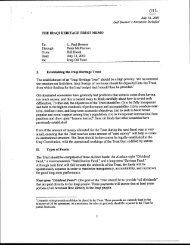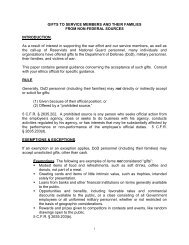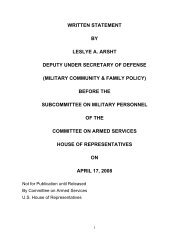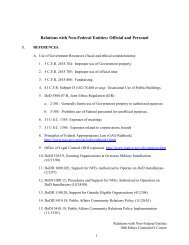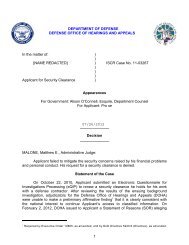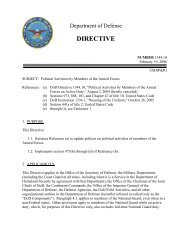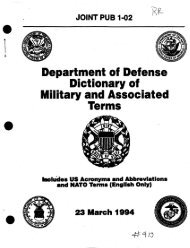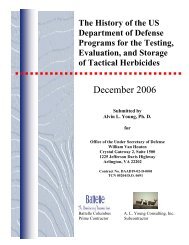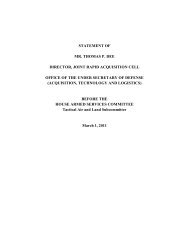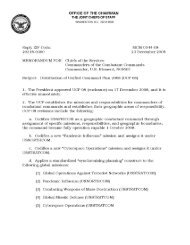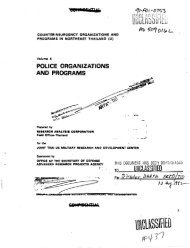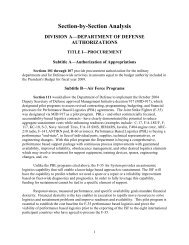Lightweight ExoAtmospheric Projectile (LEAP) - United States ...
Lightweight ExoAtmospheric Projectile (LEAP) - United States ...
Lightweight ExoAtmospheric Projectile (LEAP) - United States ...
Create successful ePaper yourself
Turn your PDF publications into a flip-book with our unique Google optimized e-Paper software.
1.4 ALTERNATIVES CONSIDERED BUT NOT CARRIED FORWARD<br />
An extensive analysis was conducted to eva!uate potential alternatives in support of the<br />
<strong>LEAP</strong> Test Program, ihcluding alternatives to the boosters and launch test ranges as<br />
described in previous sJctions. The process included identifying the boosters which met<br />
program specifications ahd identifying those ranges that could support mission requirements<br />
(Table 2). All <strong>LEAP</strong> tbst flights have been reviewed by the Treaty Compliance Review<br />
Group. The group has 1equired that the third, fourth, fifth, and sixth <strong>LEAP</strong> test flights be<br />
I<br />
flown from either WSMR or USAKA, which are ABM designated ranges. After<br />
consideration of the sixtben booster configurations found in Table 3, only the Aries I, Ari·es<br />
II, and the Castor IV A ~ere found to be acceptable. Boosters which were considered but<br />
not included in the program are identified in Section 1.4.1.<br />
· considered but not incl~ded in the program are identified in Section 1.4.2.<br />
Test ranges which were<br />
1.4.1 Altrnative Launch Vehicles<br />
Detailed studies were lrformed to select the appropriate launch vehicle to support <strong>LEAP</strong><br />
test flights. Critical fJctors in the booster selection process included weight, diametc~r,<br />
performance characterJtics (including reliability), availability, and compatibility with various<br />
test ranges. Boosters donsidered for the <strong>LEAP</strong> Test Program are shown in Table 3.<br />
The Black Brant and Aries I boosters were the only two boosters to meet the program<br />
requirement of being compatible with launching from WSMR. Both boosters h2cve<br />
previously been flown from WSMR. However, the Black Brant booster has a 17 inch<br />
diameter, compared to the 48 inch diameter of the Aries. The necessary booster width to<br />
accommodate the <strong>LEAP</strong> payload is designated as 40 inches. The Black Brant, therefore,<br />
does not meet prograJ. specifications and was dropped from further consideration.<br />
· nie analysis for booster performance was also applied to <strong>LEAP</strong> projectile launches from<br />
USAKA For the reasbns cited above, the Aries I and Aries II boosters were chosen over<br />
other alternatives. A 6etailed analysis was performed to guide booster selection for the<br />
1-50



